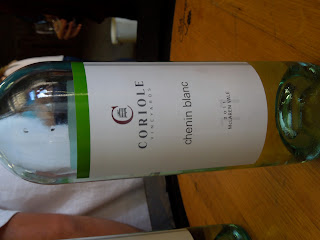Hi Kasey,
Glad to hear that you found our presentation at HdR interesting and that you are now studying in Adelaide. Are you a student of Steve Lloyd-Moffett?
Please find answers to your questions below. As it’s harvest for us at the moment, our responses may not be as in depth or well written as we would like but hope that they are helpful.
1. How do you feel about Australia's current wine market? Mmmm, good question... we see Australian wine producers in an awakening phase at the moment. 10 years ago Australian wine producers thought they could do no wrong but in recent years we have experienced a check in our confidence. I feel that supply still exceeds demand for Australian wine in the medium term (say the next 3-5yrs). 2012 should see growers sell all of their fruit due to the smaller crop following a smaller harvest in 2011. We are confident that Australia’s wine reputation will recover in the international market and that criticism over recent years will help us to refocus and strive for improvement in our winemaking & viticulture practices. Australia has many excellent, diverse & interesting wine regions. We generally embrace new methods, are excited by new varieties and are not restricted by tradition/ expectation which allows us to be experimental. So I think the export market will slowly improve and the domestic market will remain strong.
2. How many cases do you produce annually? (so we can get an idea of the winery sizes that we are comparing). We are a small, 2 person, family operation. Our annual production varies more than many other producers who have irrigation to assist in low rainfall years. Our vines are dry grown & rely on natural rainfall so drought times are tough. A good vintage/normal harvest, will see us produce 3,000 cases (12 bottle cases = 36,000 bottles).
2. How many cases do you produce annually? (so we can get an idea of the winery sizes that we are comparing). We are a small, 2 person, family operation. Our annual production varies more than many other producers who have irrigation to assist in low rainfall years. Our vines are dry grown & rely on natural rainfall so drought times are tough. A good vintage/normal harvest, will see us produce 3,000 cases (12 bottle cases = 36,000 bottles).
3. About what percentage of your wine is exported? We export 20-25% of our annual production.
4. Which countries do you choose to export to and why? Our largest markets are the UK & USA, both of these are strong wine markets & have been interested in our wine.
The following countries have also been very dear to us but that may be as much to do with our importers in each market as the market itself. Our importers in each country are committed, quality/value focused people who are extraordinarily interested in all things wine & food and we admire them greatly. They are in: Germany, Switzerland, Canada (Ontario), Japan, Denmark, Belgium, NZ, Singapore, France, Israel & Russia.
5. How would you compare Australia's wine market to California? We would expect them to be quite similar in nature. Varietal labelling and bold fruit flavours are common to both. Australian consumers are perhaps slightly more comfortable/familiar/confident with wine as part of everyday life (though as in California there are many demographic groups here). In the market place we would be competing for similar customers due to the general similarities in our wines & styles. We expect that we share similar concerns in winemaking and viticulture and market share such as global warming, winegrowing and impact on our environment, wine style trends, global economy etc.
Good luck with your senior project & warm regards,
Raegan & Drew Noon.
NOON WINERY
PO Box 88, Rifle Range Road
McLaren Vale SA 5171
AUSTRALIA
+61 (0)8323 8290 ph/fax/answer





